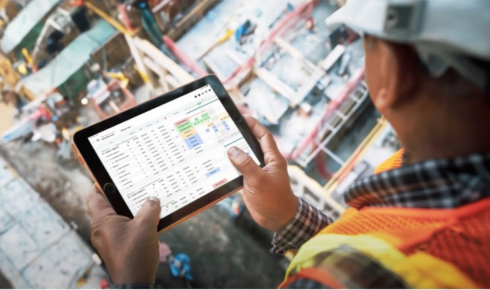Building Smarter, Not Harder — Why Modern Scheduling Tools Are Transforming Construction Projects
There’s a quiet revolution happening on construction sites. It’s not about bigger cranes or stronger materials — it’s about time. The ability to manage schedules, anticipate bottlenecks, and coordinate teams has become the beating heart of a successful project. In the past, scheduling meant flipping through spreadsheets, chasing updates, and crossing fingers that delays didn’t pile up. Today, technology is doing the heavy lifting.
Let’s be real — construction is chaos in motion. Deadlines shift, weather messes with timelines, deliveries get delayed, and teams juggle overlapping tasks. That’s why scheduling software construction tools have become indispensable. They don’t just create timelines; they create control. These platforms let project managers visualize dependencies, flag risks early, and keep every subcontractor and engineer on the same page. It’s not about fancy features; it’s about cutting down those “we didn’t see that coming” moments.
When Time Becomes the Hidden Cost
Every construction professional knows the math: time overruns equal money lost. But what often gets missed is how poor scheduling quietly eats into profit margins. One day’s delay on a large site can ripple across suppliers, labour, and equipment hire — bleeding thousands before you even notice.
That’s where modern scheduling tools come in. They turn vague timelines into dynamic, data-driven blueprints. Imagine having the ability to simulate different project scenarios before committing resources. What happens if your foundation takes three days longer to cure? What if a shipment arrives a week late? With predictive insights, you can reshuffle priorities instead of firefighting.
The New Backbone of Project Planning
The construction industry’s shift toward digital scheduling isn’t just a trend; it’s survival. With tighter margins and clients demanding transparency, planners need real-time visibility. Modern schedule analysis tools dig deep into project data, finding inefficiencies you might overlook. These tools can detect patterns — like recurring bottlenecks with specific vendors or tasks that consistently lag — and give you actionable insights before things go south.
It’s like having a project mentor built into your workflow. Instead of relying solely on intuition, managers now have data-backed clarity. And the best part? These tools don’t replace experience; they amplify it. A seasoned project manager with access to analytics becomes unstoppable.
Collaboration Without the Chaos
One of the most frustrating parts of managing a construction site is keeping everyone aligned. The architect wants one update, the client another, and the on-site crew has a different reality altogether. Paper reports, phone calls, and outdated Excel sheets simply can’t keep up.
That’s why collaboration-focused scheduling platforms are making waves. A single dashboard that everyone can access — whether they’re in the office or on-site — changes everything. When a timeline shifts, everyone knows instantly. No confusion. No finger-pointing. No wasted hours chasing the latest version of a plan.
The more connected the workflow, the fewer surprises you’ll face. Transparency breeds accountability, and accountability drives efficiency. It’s that simple.
The Rise of Intelligent Construction Software
If you’ve ever tried managing a large build manually, you know how quickly the moving parts multiply. Procurement, subcontractors, inspections, weather dependencies — it’s an endless loop. Today’s construction project scheduling software takes that chaos and turns it into clarity.
These systems don’t just track progress; they learn from it. Using AI-driven analytics, they can predict which activities are likely to delay based on past performance or external factors like local weather trends. They even generate alerts when your critical path is in danger. This isn’t just about staying on schedule — it’s about staying ahead of problems that haven’t even happened yet.
It’s like replacing the guesswork with a roadmap that adjusts in real-time. Suddenly, “managing” doesn’t mean reacting — it means leading.
Real Stories, Real Impact
I recently spoke with a site manager who used to rely entirely on Excel. “I thought I had it under control,” he said, “until one delay threw everything off for weeks.” After switching to an integrated scheduling platform, he could instantly see which tasks were dependent on the delayed shipment and reassign resources within hours. What could’ve been a two-week delay turned into a one-day adjustment.
These are the quiet wins that stack up over a year — small moments of foresight that save huge amounts of time and money.
Making the Shift (and Making It Stick)
Of course, adopting new tools isn’t always smooth. Some old-school teams push back, saying, “We’ve always done it this way.” But in truth, digital scheduling doesn’t replace human expertise — it respects it. The most successful transitions happen when management treats technology as a partner, not a replacement.
Start small. Maybe you track just one project phase digitally. Show the team how much smoother it runs. Then scale it across departments. Before long, even the skeptics will be checking the dashboard first thing in the morning.
The Bottom Line
At its core, scheduling isn’t about software — it’s about people managing time. The right tools just make that job easier, faster, and far more accurate. As construction continues to evolve, those who embrace these technologies will find themselves not just finishing projects — but finishing them stronger, smarter, and with less stress.
If time is money, then precision is profit. And precision today lives inside well-designed digital tools that keep the pulse of every project beating in sync.
Construction may be built on concrete and steel, but success? That’s built on good scheduling.

